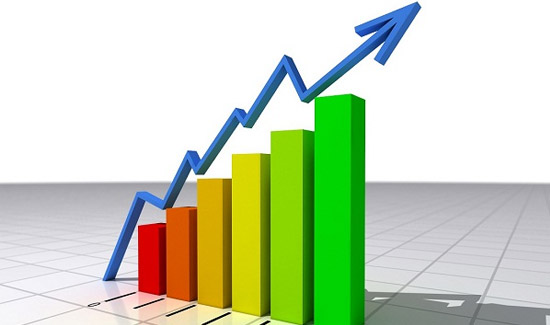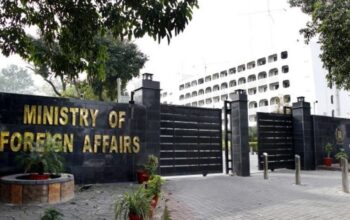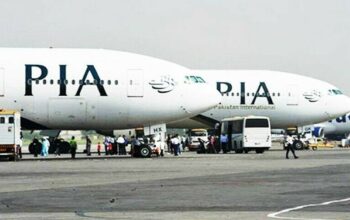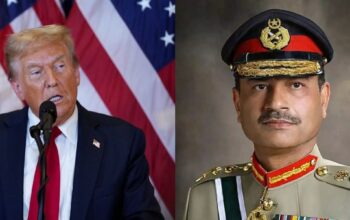By Staff Reporter
ISLAMABAD: Setting the economic targets for the next fiscal year, the National Economic Council (NEC) on Wednesday signed off on an economic growth rate of 5 percent, a consolidated public sector outlay of Rs2.184 trillion, flat compared to this fiscal’s Rs2.135 trillion, and an inflation rate of 11.5 percent.
With Prime Minister Shehbaz Sharif in chair, the NEC meeting was populated by chief ministers of three provinces other than Khyber Pakhtunkhwa and members of the council.
During the meeting, the premier insisted that the GDP growth should be fixed on the higher side and target should be 6 percent. To which, Federal Secretary Finance Hamid Yaqoob argued it would have to be aligned with other macroeconomic targets and under the IMF programme, it would become problematic.
Minister of State for Finance Aisha Ghous Pasha said it ran the risk of overheating the economy, so the macroeconomics should be aligned to avoid such developments.
The consolidated size of the national development budget was Rs2.184 trillion, the meeting was told, which included the federal allocation of Rs800 billion as opposed to this fiscal’s Rs900 billion, though it was noted that total federal expenditures would not exceed Rs550 billion.
Provinces would formulate Rs1.384 trillion separate annual development plans in aggregate, up 12 percent from Rs1.235 trillion for FY2022, officials informed the meeting.
A unanimous decision was also reached that 60 percent of the federal public sector development programme (PSDP) should be spent on ongoing development projects, while the remaining 40 percent would be allocated to new ones. According to an official, it would enable coalition partners to accommodate as many projects as possible before the general elections next year.
The Prime Minister told the NEC members that improving the lives of the people was the top priority for next year’s development agenda and it would be achieved by utilising the full capacity of the federal and provincial governments.
‘The government would focus on developing infrastructure, improving governance and ensuring uninterrupted and affordable energy, quality education and basic health facilities for all without discrimination,” the PM said.
The NEC was a representative forum of national unity and cohesion, he said, adding that its key theme of coordinated efforts by the centre and the provinces for national harmony should be guiding principles.
He said “unwise” policy measures taken by the previous government had created a situation where the country was now facing both internal and external economic challenges like poverty, inflation, unemployment and instability.
The NEC also gave go-ahead to the Macroeconomic Framework for Annual Plan 2022-23, which foresees a 5 percent growth rate on agriculture (3.9 percent), manufacturing (7.1 percent) and services (5.1 percent) sectors strength.
Furthermore, investment will be moderated by fiscal and current account compression, whereas inflation will remain at double digits (11.5 percent) because of global inflationary pressures.
In order for the agricultural sector to grow by 3.9 percent, cotton and wheat production must rebound, while water, certified seeds, fertilisers, pesticides, and agriculture credit must be available.
Through the revival of both of these crops, fewer imports will be required, which will ease out balance-of-payments concerns.
In the annual plan, the improvement in industrial performance over the past two years is anticipated to consolidate, whereas augmented production capacity during these years will anchor the growth momentum. However, the growth momentum will be moderated owing to fiscal consolidation efforts.
In 2022-23, the manufacturing sector is projected to grow 7.4 percent. In spite of this, higher energy costs and lower energy supplies, exchange rate uncertainty, and supply shocks caused by the Russian-Ukrainian conflict pose downside risks.
The service sector will also be subject to moderation in growth and is targeted to grow by 5.1 percent in 2022-23. Expected performance in both agriculture and industrial sectors will complement the targeted growth in the service sector.
Due to stabilisation and an uncertain economic environment, investment level for fiscal year 2022-23 is expected to decrease slightly to 14.7 percent of GDP.
The fixed investment rate is seen to increase by 13 percent nominally, but it will fall slightly to 13 percent as a percentage of GDP, while the national savings rate is expected to reach 12.5 percent.
Copyright © 2021 Independent Pakistan | All rights reserved




